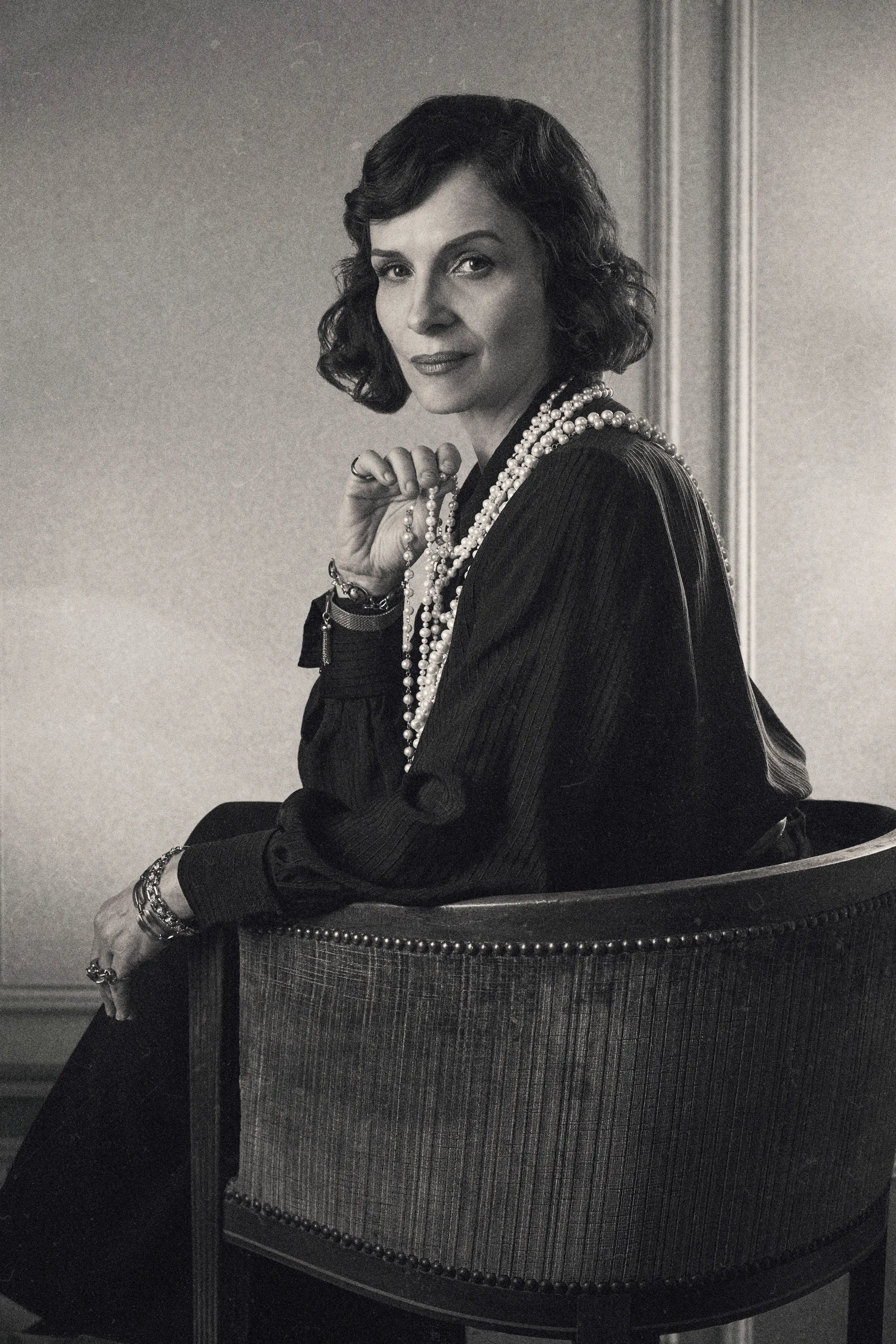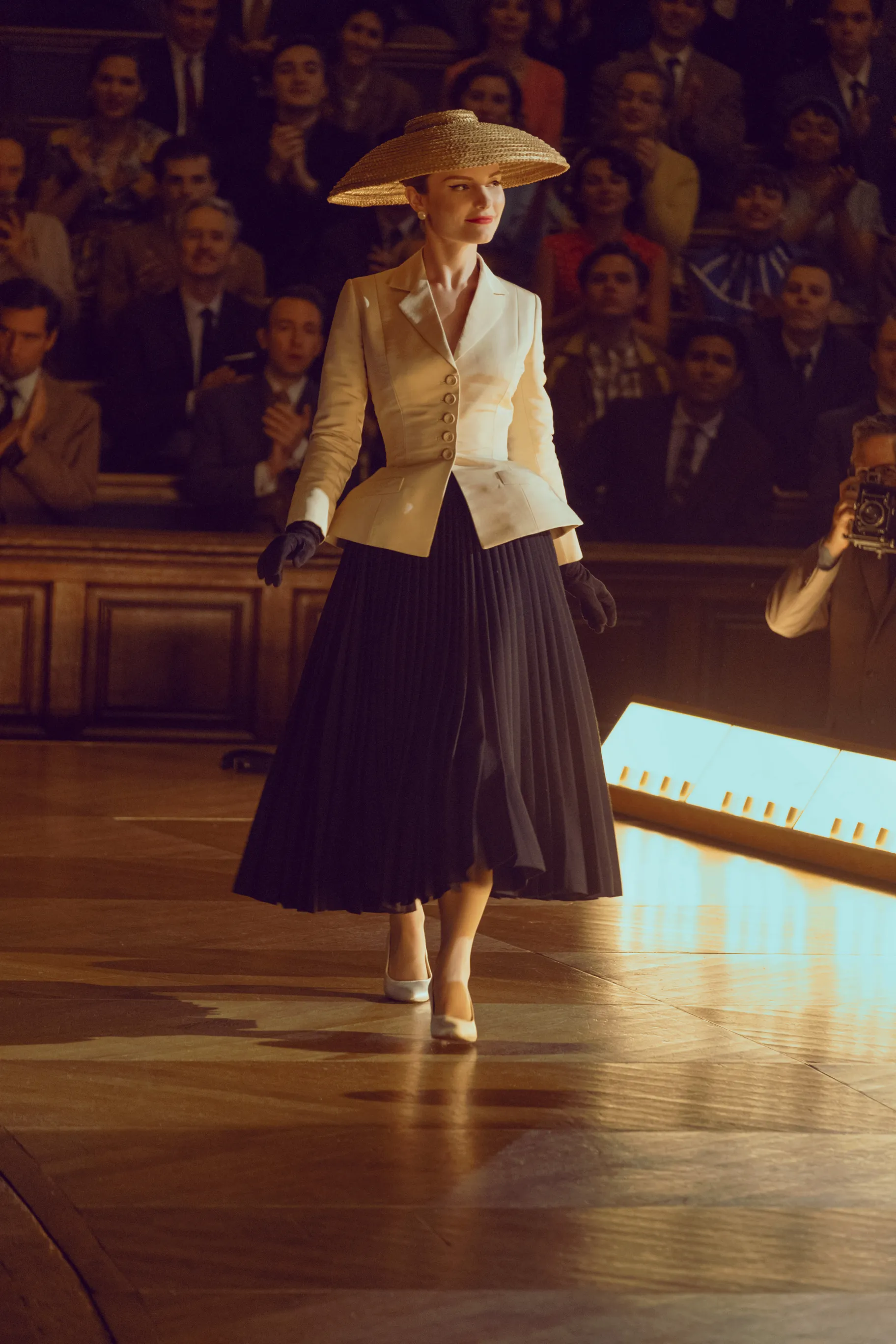Dior — known for sumptuous gowns — and Chanel — think the little black dress — are both respected fashion brands. But during the Nazi occupation of France, their namesake designers had to choose between their livelihoods and ethics. Christian Dior reluctantly obeyed when he was told to make gowns for Nazi wives, and Coco Chanel eventually became a Nazi collaborator. Their stories are part of a new 10-part drama called The New Look, which airs on Apple TV+.
The show is set during the latter half of the Nazi occupation of Paris, which started in 1940 and lasted four years, says Todd Kessler, creator of The New Look. Some Parisians fled the city, while others were sent to concentration and work camps.
The series explores the reasoning behind these fashion designers’ collaboration with the Nazis. That includes the story of Lucien Lelong (played by John Malkovich), the president of the Chambre Syndicale de la Couture, the council of haute couture houses. At the time, he employed upwards of 1500 people at his own company.
“In research that I was able to uncover, he made a decision to keep people working because that was their only livelihood. And there were enough shortages of food and rationing of electricity and curfews. And life was definitely under the Nazi regime, one that was very different for the French than they were accustomed to,” Kessler says.
The show also touches on the Nazis’ fascination with aesthetics and desire to bring French couture to Berlin. Kessler says they wanted to make the German city the fashion world's capital.
He points to a moment at the beginning of the show between Chanel (Juliette Binoche) and German spy Walter Schellenberg (Jannis Niewöhner): “[He] comes to Paris for the first time and Schellenberg himself was very taken with Hollywood and new Hollywood stars and knew the studios. And he tells Chanel that [she was] a great person to welcome him because she was bigger than any Hollywood star that existed.”

Juliette Binoche plays Coco Chanel in “The New Look.” Credit: Apple TV+.
Chanel was a survivor, Kessler describes. Her mother died when she was young, and her father abandoned her and her sister at a convent. In her 20s, she arrived in Paris when it was illegal for women to have bank accounts.
“The idea of what Chanel faced, and then is trying to survive, and at every moment being tested by the Nazis — and as we've seen in other depictions and other accounts of Nazis, how people live and die seems very random. … In many ways, she made wrong decisions, but in many ways, she survived. So were they the right decisions?”
Kessler says she initially got involved with the Nazis after her nephew, who was fighting for the French, was captured and thrown into a German prison. She eventually found someone who could help get him out. In essence, he says, they did her a favor and asked for one in return.
Ultimately, Kessler says audiences can decide for themselves what kind of a person Chanel was, but he hopes they’ll put themselves in her shoes to understand her actions.

A model for Christian Dior walks the runway at Sorbonne in 1955. Credit: Apple TV+.
